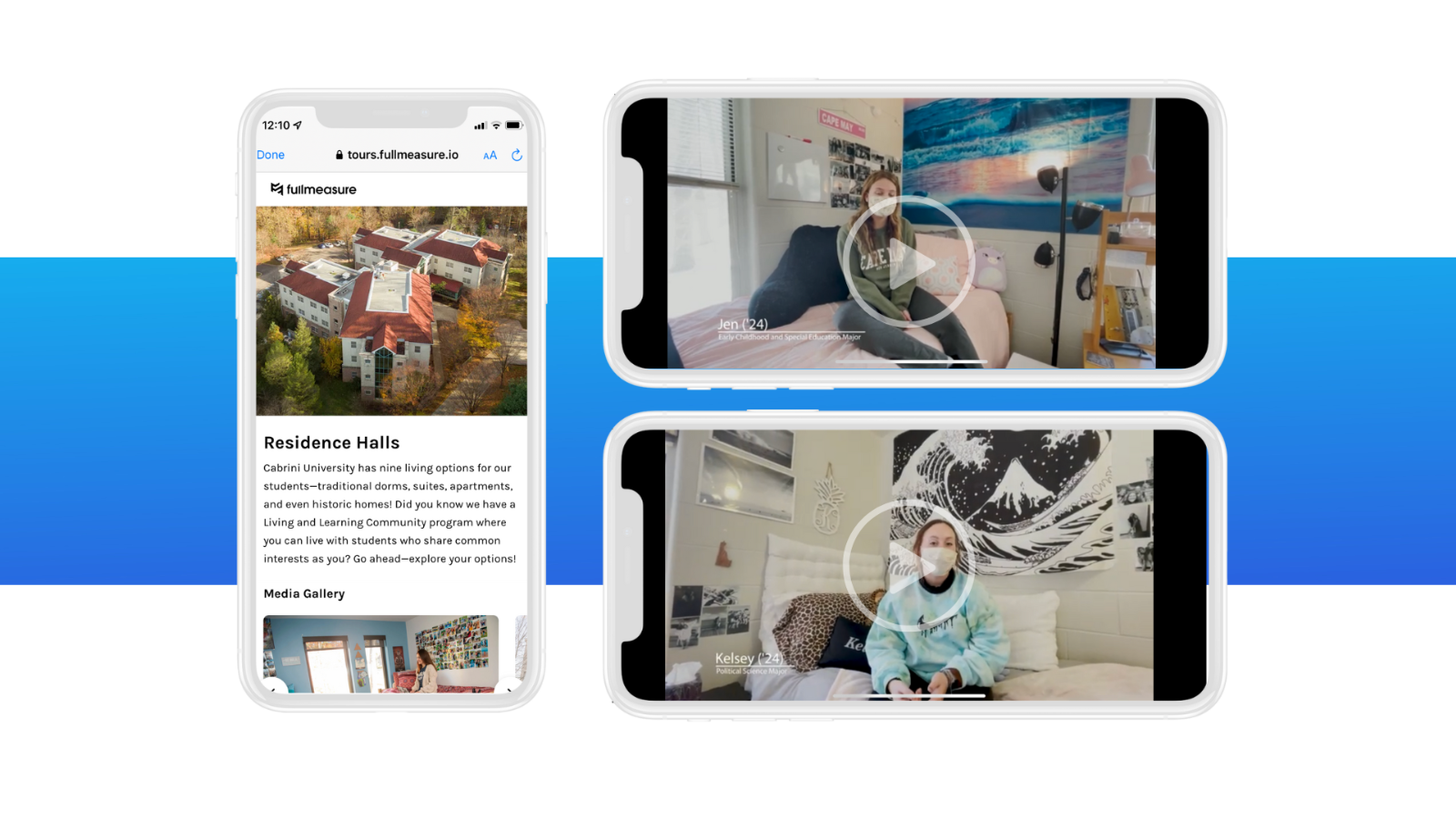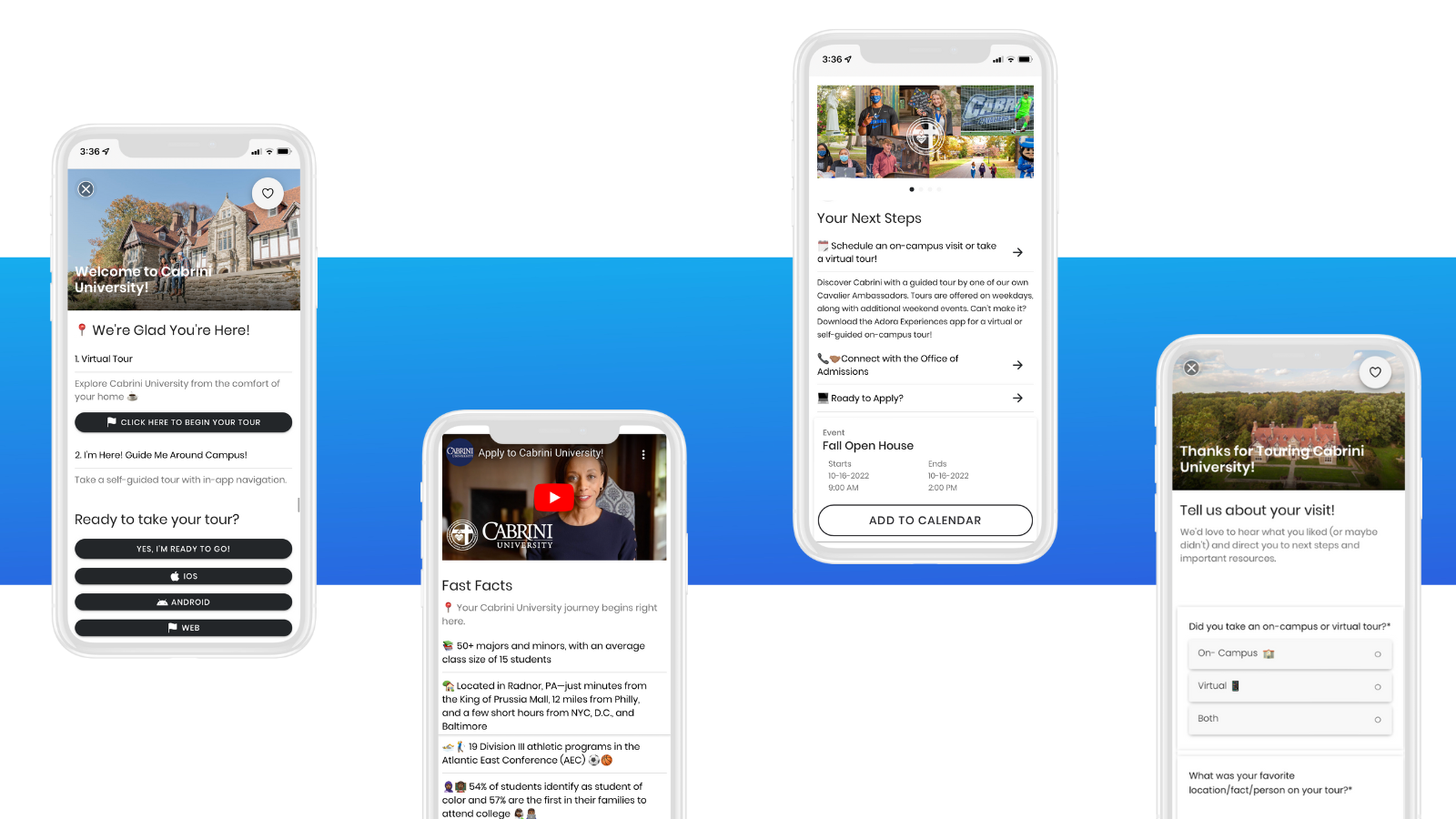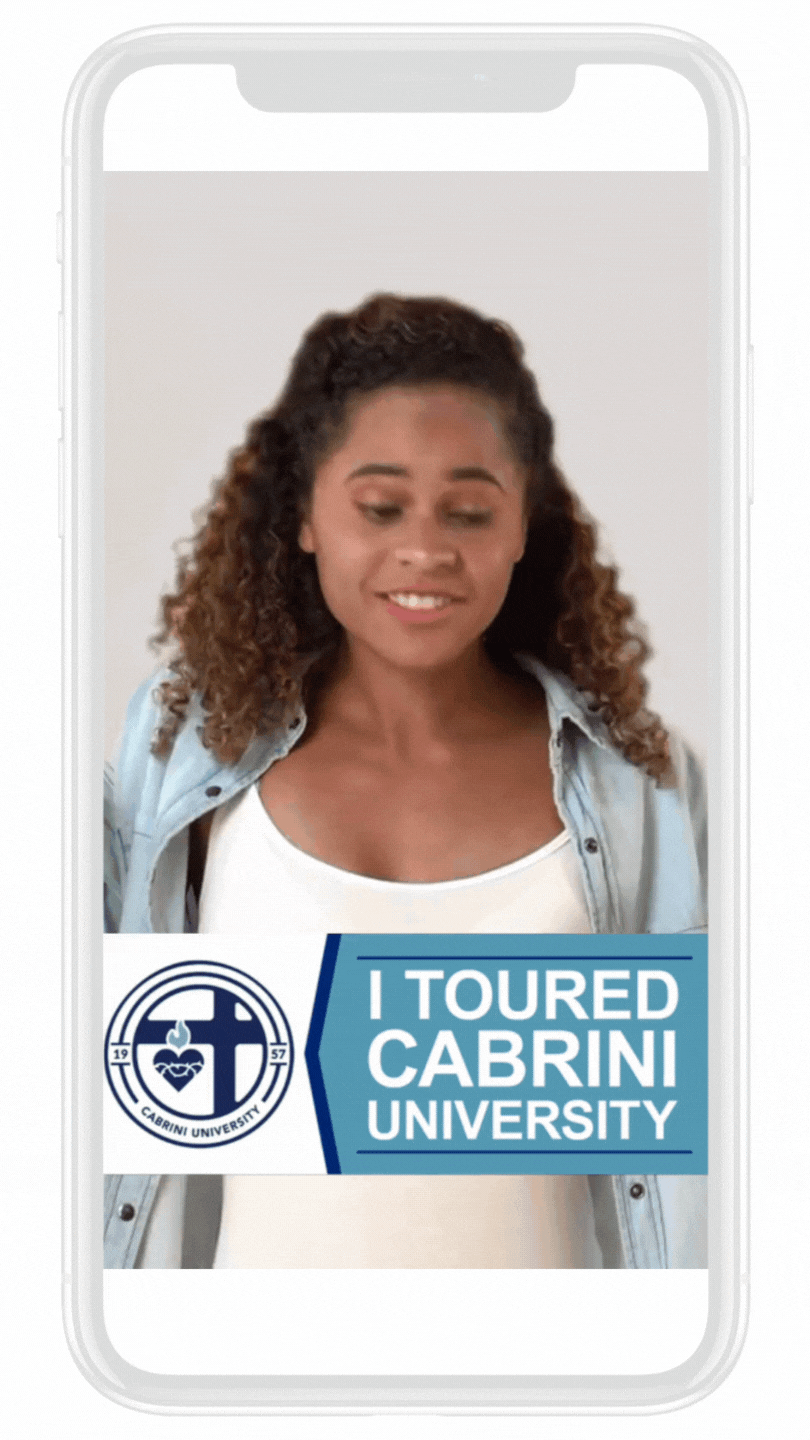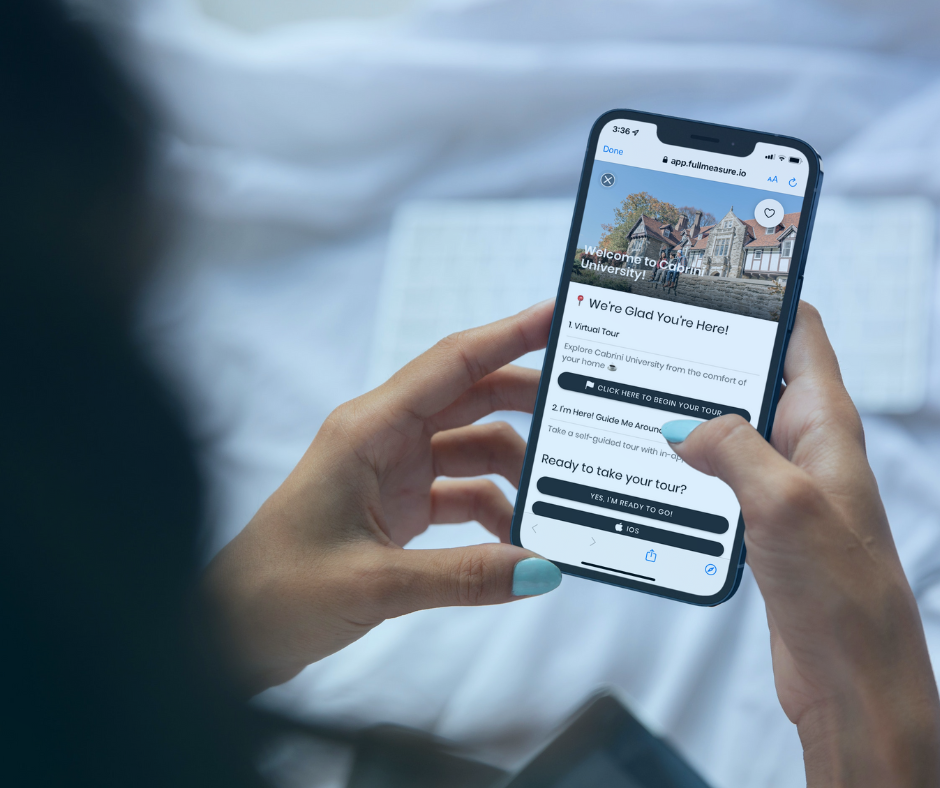4 strategies Cabrini University uses to provide an engaging and authentic tour experience anytime, from anywhere.
By: Kyle Freelander
Tours remain an important way for students and their families to learn about an institution and determine if it’s a good fit for them — directly impacting KPIs like application volume and enrollment.
In fact, research shows that 85 percent of students consider a campus visit to be of considerable importance to their college search process, and 41 percent said the look and feel of campus factored into their decision to enroll.
With tour impact playing such a vital role in decision-making, Cabrini University prioritized improving its tour offerings. Using the Campus Visit Experience from StudentBridge, the institution replaced its static tours with dynamic options that can be completed anytime, from anywhere.
“Prospective students aren’t always able to make it out to campus for a visit, especially earlier in the admissions process. And, even if they can come to campus, they may not always be able to make it to one of our guided visits,” says Bryn Campbell, Director of Undergraduate Admissions at Cabrini University. “Increasing our tour offerings and ensuring all of them are exciting, relevant experiences helps us broaden our reach and really meet students where they are in their journey.”
In just 8 months with the Campus Visit Experience, Cabrini has seen a notable uptick in tours — to an average of 316 visits per month. And 11 percent of visitors have taken more than one tour.
Below, you’ll discover four strategies they used to boost tour participation, ensure impactful visits for everyone, and get prospective students excited about joining the Cabrini community.
1. Offer truly personalized tours
Ensuring impactful tours starts by making sure they are relevant to everyone who visits. With the Campus Visit Experience, Cabrini University enables visitors to personalize their tours based on their unique academic and social interests, needs, and more. Plus, they can also customize their tour based on how much time they have to visit (whether in person or virtually).
From there, a logical tour route is automatically generated — ensuring a relevant, engaging experience. Data shows Cabrini’s visitors select an average of 7 personalization tags, with Residence Hall, Student Life, and Food comprising the top 3 selections.
-gif.gif?width=245&name=Cabrini%20-%20personalized%20tours%20gif(short)-gif.gif)
2. Increase authenticity by including user-generated content (UGC) in tours
Recent research shows that 43 percent of undergraduate students said virtual tours should include messages from enrolled students. Yet only 22 percent said student messages were part of a virtual tour they participated in.
By putting user-generated content (UGC) — or images, videos, testimonials, and more from your users (including current students, alumni, faculty, and staff) — directly into your tours, you provide visitors with an authentic view of your institution when and where it really counts.
At Cabrini University, student voices are at the heart of their campus visits. Interactive tour stops include video testimonials from current students sharing what it’s like to be a student at Cabrini.
“When it comes to campus visits, authenticity is everything. And there’s no one more authentic than our students,” says Campbell. “By actively gathering UGC and putting it in our virtual and self-guided tours, we can showcase the diversity of our institution, bolster pride and a sense of belonging among current students, and get prospective students excited about joining the Cabrini community.”
 3. Reach students, families, and others via text message
3. Reach students, families, and others via text message
To boost tour participation, reach, and overall engagement, a mobile-first communications strategy is a must. For starters, research shows that text messages have a higher open rate than emails. In fact, 98 percent of SMS messages get opened (compared to ~20% of emails), and 58.7 percent of people check text messages within five minutes of receiving them.
And, when it comes to admissions, additional research shows that 9 in 10 students are open to receiving text messages during the enrollment process.
As part of their tour process, Cabrini University uses mobile communications to:
- Welcome visitors, provide directions to campus, and share virtual tour options
- Invite students and others to explore all the institution has to offer
- Share key information and highlight the next steps, like how to submit an application
- Support events, including open houses
- Get feedback on tours and provide individualized follow-up communications
- And more!
Soon, they’ll also start contacting parents of prospective students with family-specific information — which the platform helps them do even though they don’t have parent contact information.

4. Build excitement by tapping into TikTok
Looking to build excitement among prospective students, especially Gen Z? TikTok can be the answer you’re looking for.
Research shows that 37.3 million TikTok users in the US belong to Gen Z, and 53 percent of TikTok creators are 18-24 years old. Additionally, 90 percent of TikTok users access the app daily. Check out this infographic to learn more about why TikTok needs to be part of your institution’s admissions strategy.
Cabrini University recently launched a custom branded TikTok effect, provided by StudentBridge, as part of their tour communications. The effect empowers prospective students and other visitors to share their excitement about visiting Cabrini, whether they tour virtually or in person. This additional type of UGC also helps support the institution’s marketing efforts, boost authenticity, and drive organic impressions.

Ready to get more out of your tours? Our Campus Visit Experience can help.
Learn more and sign up for a free, no-obligation demo to see how.
Kyle Freelander (she/her/hers) is a passionate writer, former educator, and lifelong learner. She has taught English literature and writing courses in higher education, writing workshops in K-12 schools, and English and ESOL courses as a private tutor for students pre-K and up. She holds an MFA in Creative Writing from George Mason University and a BA in English (minor in Linguistics) from the University of Mary Washington. She currently serves as the Head of Content at StudentBridge.

